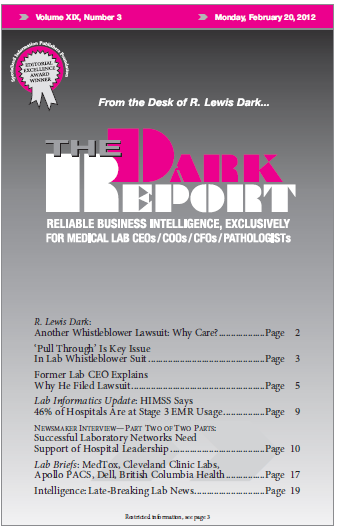ADOPTION OF ELECTRONIC MEDICAL RECORD (EMR) SYSTEMS by hospitals is occurring at a steady pace. That’s one recent finding by the Health Information and Management Systems Society (HIMSS). In a statement made on February 17, HIMSS officials said that 46% of the nation’s hospitals had achieved Stage 3 in their use of EMRs. This stage …
HIMSS Says 46% of Hospitals Are at Stage 3 EMR Usage Read More »
To access this post, you must purchase The Dark Report.


